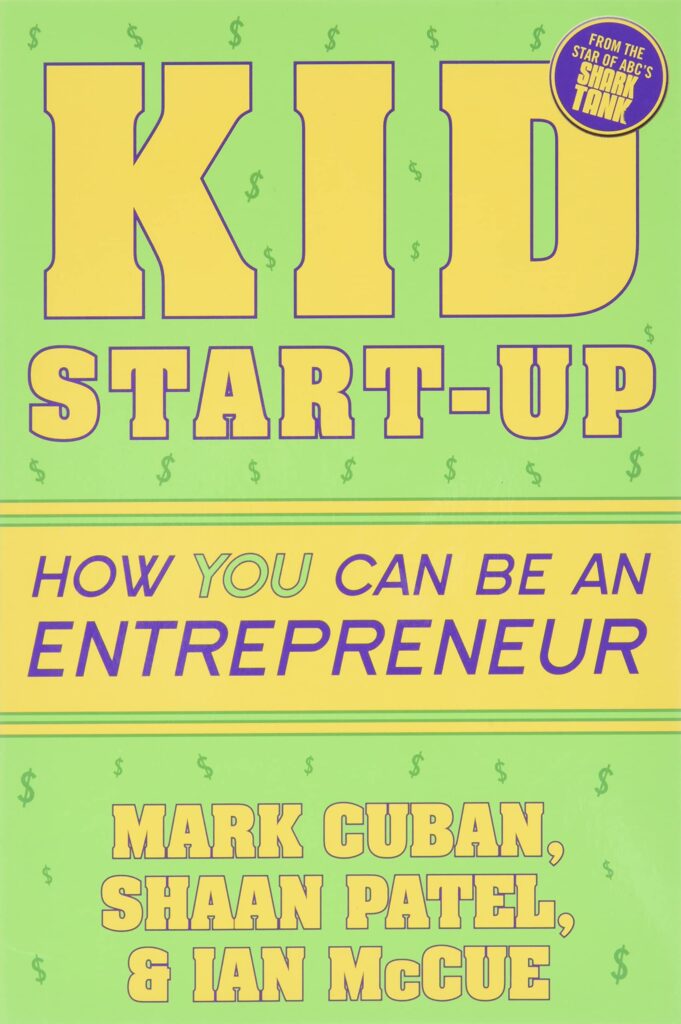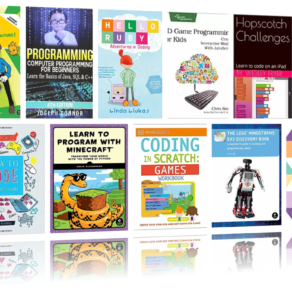As parents, we strive to equip our children with the skills and knowledge necessary to succeed in life. One critical aspect that is often overlooked in traditional education is financial literacy. Instilling strong financial values and understanding at a young age sets the foundation for a lifetime of responsible money management and decision-making. To help you guide your children on the path to financial success, I’ve compiled a list of the best financial literacy books for kids.
[Related: Best Personal Finance Books]
These books cover a wide range of topics, from basic money concepts to more advanced topics like investing and entrepreneurship. Each book is tailored to engage young minds and present complex financial ideas in a simple, easy-to-understand manner. Not only will these books provide your children with valuable knowledge, but they’ll also inspire curiosity and spark conversations about money management and financial responsibility.
Best Financial Literacy Books for Kids
Here are our top picks for financial literacy books for kids:
1. Rich Dad Poor Dad, by Robert T. Kiyosaki
In “Rich Dad Poor Dad,” Robert Kiyosaki shares his journey growing up with two father figures – his biological father and his best friend’s father. These two men influenced his thoughts about money and investing, teaching him essential lessons that allowed him to become a successful entrepreneur.
Kiyosaki’s biological father, whom he refers to as the “Poor Dad,” followed the traditional path of working hard, earning a good salary, and saving money. In contrast, the “Rich Dad” emphasized the importance of making money work for you through investments and passive income streams.
Over the past 25 years, the principles taught in this book have remained relevant and valuable, even as technology has revolutionized the world of finance. The book covers essential topics such as the difference between assets and liabilities, the importance of financial education, and the role of entrepreneurship in building wealth.
2. Finance 102 for Kids, by Walter Andal
“Finance 102 for Kids” is the second installment in Walter Andal’s series aimed at teaching financial literacy to young readers. Building upon the foundational knowledge presented in “Finance 101 for Kids,” this book dives deeper into real-life situations and the practical application of essential financial lessons. Andal believes that children must understand money management concepts at an early age to secure a financially stable future.
The book covers essential topics such as saving, investing, and growing money. It also includes fun and engaging activities designed to help children learn about budgeting, setting financial goals, and understanding the value of money.
3. Investing for Kids, by Dylin Redling, Allison Tom
“Investing for Kids” is a comprehensive guide designed to teach children aged 8 to 12 the basics of saving, investing, and growing their money. Through the entertaining and informative guidance of the Dollar Duo – Mr. Finance and Investing Woman – young readers will learn about stocks and bonds, the importance of diversification, and the concepts of risk and reward.
The book aims to instill an early understanding of money management in children, so they can become money-savvy adults. It covers essential financial concepts such as compound interest, the power of saving, and the value of long-term investing.4. On Your Mark, Get Set, Invest, by Luke Villermin
4. On Your Mark, Get Set, INVEST , by Luke Villermin
is an engaging and educational book by Luke Villermin that introduces children aged 8 to 12 to the essential concepts of personal finance, money management, and investing. Using the entertaining story of Thrifty Tortoise and Ritzy Rabbit racing towards the ultimate prize – a brand-new bike – the book offers valuable lessons on making smart money decisions.
Throughout its seven chapters, the book addresses critical financial questions such as: where money comes from, why saving now leads to a better financial future, the importance of budgeting, and how the stock market and compounding can be a child’s most potent financial superpower. The story format helps young readers to understand and retain complex financial concepts more easily.
5.How to Turn $100 into $1,000,000, by James McKenna, Jeannine Glista, Matt Fontaine
“How to Turn $100 into $1,000,000: Earn! Invest! Save!” is an insightful and practical guide for young readers, teaching them essential financial skills to help them become financially savvy and work towards their first million.
Authored by James McKenna, Jeannine Glista, and Matt Fontaine, the creators of BizKid$, the book breaks down complex financial concepts into easily digestible chapters, focusing on three core strategies: making money, saving money, and growing money through smart investments.
The book offers advice on securing a first job, starting a business, setting financial goals, creating budgets, and harnessing the power of compound interest to grow wealth. The authors also provide useful tools, such as a one-page business plan template, a two-page plan to become a millionaire, and a personal budget tracker.
6. Kid Start-Up, by Mark Cuban, Shaan Patel, Ian McCue
“Kid Start-Up: How YOU Can Become an Entrepreneur” is a motivating and informative guide for young readers, inspiring them to explore entrepreneurship and launch their own start-ups. Co-authored by Mark Cuban, Shaan Patel, and Ian McCue, the book empowers kids to discover their business ideas and bring them to life, regardless of their age.
The authors provide ten kid-friendly business ideas, ranging from classic ventures like lemonade stands to contemporary projects such as opening an Etsy art store. The book encourages young readers to either pursue one of the suggested businesses or to create their own unique start-up concept.
By highlighting that every billionaire was once a kid with innovative ideas, the book emphasizes that age should not be a barrier to achieving success in the world of entrepreneurship. “Kid Start-Up” provides young readers with the confidence, knowledge, and inspiration to embark on their entrepreneurial journeys, shaping the business leaders of tomorrow.
7. Make Your Kid A Money Genius, by Beth Kobliner
“Make Your Kid A Money Genius” is a comprehensive, jargon-free guide designed to help parents teach their children about money management, regardless of their income levels. The book emphasizes that it’s crucial to start educating kids about money from a young age, as research shows that basic money habits are formed by the age of seven. The author, Beth Kobliner, asserts that instilling essential values such as delayed gratification, hard work, living within one’s means, obtaining a good education, and being generous are key to raising financially savvy and successful individuals.
The book covers a wide range of topics, including debunking common misconceptions about allowances and after-school jobs, determining the right age to give a child a credit card, and discussing why giving a child a lump sum of cash can be a useful parenting strategy.
8.Financial Peace Junior Kit, by Dave Ramsey
The “Financial Peace Junior Kit” is a comprehensive toolkit designed to help parents teach their children essential money management skills, covering four basic concepts: working, spending, saving, and giving. The kit aims to empower parents to raise financially smart children, regardless of their own financial history, by providing a range of tools and resources to engage kids of all ages.
The kit includes several components: a Parent Guide, which offers step-by-step instructions for using the kit and provides insights into the money concepts that children can understand at different ages and stages; a Junior’s Activity Book, filled with fun illustrations, coloring pages, and activities to engage kids in the lessons; a Smart Kids Launch Pad chart with reward stickers to celebrate the completion of each activity; a Chore Chart with magnetic chore labels and a dry-erase pen for kids to track their progress; a set of durable Give, Save, and Spend envelopes for kids; and a free “Smart Money, Smart Kids” eBook to further educate and inspire children.
9. Little Daymond Learns to Earn, by Daymond John
“Little Daymond Learns to Earn” is a delightful and educational children’s book authored by bestselling writer and Shark Tank star Daymond John. The story introduces readers to Little Daymond and his resourceful friends, who come up with a small business idea to earn money for a music poster that Daymond desires. As the friends pool their unique strengths and talents, they learn valuable lessons about financial management and cooperation, ultimately achieving their goals and even saving some extra cash.
The book covers essential concepts such as saving, spending, budgeting, and borrowing, providing a solid foundation for children to build upon as they grow older. By introducing these ideas in a fun and relatable story, “Little Daymond Learns to Earn” sets young readers on a path toward financial success and responsible money management in the future.
10. Kyng & Kyren’s Generational Wealth Building Activity Book, by Kyren Gibson
“Kyng & Kyren’s Generational Wealth Building Activity Book” is a unique and informative guide that aims to teach children valuable lessons about personal finance, wealth-building, and financial literacy.
Recognizing that schools often overlook these critical aspects of adult life, this book fills the gap by providing essential financial knowledge to help kids get a head start in life.
Together, Kyren and Kyng created “Kyng & Kyren,” an educational tool and motivational speaking platform with the goal of empowering their community through wealth and knowledge. The book’s engaging and motivational content is designed to inspire children to become financially literate, laying the groundwork for a successful and financially secure future.
















